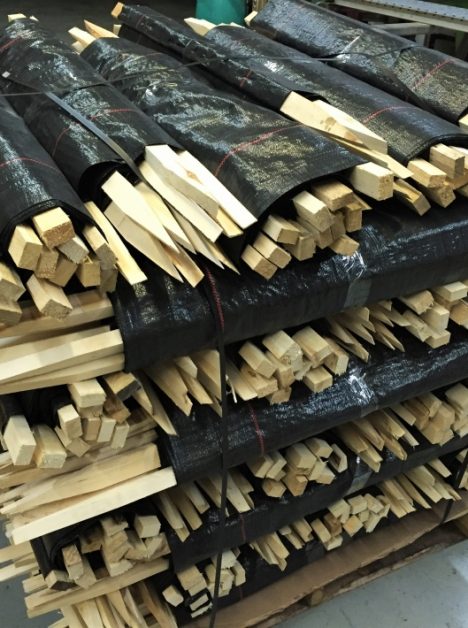Silt fences
Land-based sediment barriers (silt fences) are composed of pointed wooden stakes to which a strip of geotextile is attached with industrial staples.
Terraquavie manufactures two silt fence (SF) models needed for sediment control on construction sites. The standard model is made of woven geotextile, whereas the MTQ model is made of nonwoven geotextile. Silt fences are 30 metres long.
Manufactured by Terraquavie

Fonction
Silt fences are an essential component of an environmental protection plan during construction work, as they control sediment, keeping project-generated sediment on the project site. SFs help protect water quality in lakes, streams and rainwater management systems against sediment pollution and even against certain types of construction materials and debris.
SFs are set up along the edges of a site, but also in strategic locations such as around a pile of dirt. They are removed when the work is complete and/or the sources of sediment transport have been eliminated.
Installation
To ensure their effectiveness, silt fences must be carefully installed and meticulously maintained. The installation must be custom-designed for the sediment transport sources and runoff behaviour of the specific site. Fence design must reflect the development of the project. Thus, the placement of SFs must be constantly adjusted. They must be placed to allow water reaching them to be stored behind them. The ends of the fence must form a J hook to create a weir effect.
The installation of SFs is prohibited in places where there may be continuous water flow, such as ditches, creeks or small streams.
For ease of installation, it is advisable to have extra stakes on hand. A 150-mm border along the bottom of the geotextile strip is not stapled. This border must be completely buried in the ground. First, a trench must be dug using an excavator or trencher. The fence must be installed with the geotextile membrane on the uphill side, toward the runoff; the stakes are always on the downhill side. The water flow must push the geotextile against the stakes. In planting the stakes, ensure that the geotextile is tightly stretched between each stake. When the fence is in place, the geotextile is anchored in the trench before backfilling.
It is recommended to inspect fences daily and after all weather disruptions to ensure that they are undamaged and remain effective.
At the end of the job, when bare soil has been stabilized and all sources of sediment input have been eliminated, the silt fence can be removed.